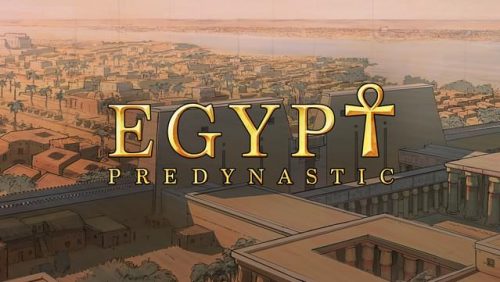My Style of Game Play and Exciting Experience with the First Mentor Game
Time flies, indeed, and especially when you are immersed in a video game you love. Additionally, if the video game was one part of your assignment, then you have solid reasons and 100% confidence to play it on time. I always procrastinate, but I didn’t procrastinate so much this time. I am the lucky person who had a video game assignment in the Designing Games for Learning course guided by Dr. Danielle Oprean, assisted by a game Champion, Arch McGee, from Why So Serious Game (WSSG) Academy.
Know Yourself
“Know thyself” (Greek: Γνῶθι σαυτόν, gnōthi sauton) is a philosophical maxim which was inscribed upon the Temple of Apollo in the ancient Greek precinct of Delphi(“Know Thyself,” 2023).

As a designer and researcher of gamification, I want to observe video games from higher dimensions than ordinary players. I was an ordinary player before this course. As a naughty boy who grew up in China, video games had more lure than candies to me, which my parents strictly forbade. But I was still crazy curious and addicted to playing them when my parents did not have enough energy to supervise me (I can understand my 7-year-old daughter Ritang better when she tends to play with her iPad for a longer time without my and her mom’s supervision). I played Super Mario Bros and Contra throughout my primary school and middle school. I spent a lot of time playing Command & Conquer: Red Alert, StarCraft, Uncharted Waters, Diablo II: Resurrected, etc. when I was studying in High School. Then, online games became more and more popular when I enrolled in college, and the World of Warcraft “murdered” a lot of my spare time… I even became addicted to online video games in the fall semester when I was a sophomore, which resulted in my two failed courses… After that, I spent a long time pondering the pros and cons of video games, and I noticed the importance of time management skills and effective learning. Day by day, I rescheduled my learning time and playing time and tried to choose the proper games to align them with my learning. For example, I used the Age of Empire series to experience different languages and civilizations and learn world history. I even used some games in my biology and science courses after I graduated from college and became a teacher. I also like the friendly and easy atmosphere when people play video games, and I thought the constructive learning progression is similar to the learning progression when I can use game-style activities properly. So, I love video games, especially those that bring me new knowledge and feelings.
Dr. Oprean shared with us a tool to test my Game Play Type: Quantic Gamer Motivation Survey The survey told me that I was both an Architect and a Bart.

I think the gamer profile matches me well. I love games that can broaden my horizons, extend my life, enrich my feelings, and touch my inner heart. The profile told me that my primary player type is the “Architect,” who tends to play games independently, make decisions, and enjoy the progression. I truly enjoy the feeling of establishing projects and achievements in the games. Meanwhile, the profile uncovered my secondary player type, the “Bard,” who is also good at passionately interacting with team members to explore the fantasy world. Playing video games is one of my ways of socializing. I have some lifelong friends who share similar memories of playing video games together.
My Game Player Type
If someone askes me to choose one game I love most, that will be Uncharted Waters IV.

This is a simulation and role-playing video game dealing with sailing and trading, themed around the Age of Discovery. By the way, Treasure Island and Robinson Crusoe were my favorite novels when I was studying in high school. High school was the period for me to play video games most frequently, so the game gave me a very deep impression. As a player in Uncharted Waters IV, I can take the role of a captain to manage a seagoing fleet to trade, hunt treasure, be a privateer, conquer the world, or travel all over the planet. During the procedure, romantic plots and sagas happened. I even learned the world history and geology while playing this game. The impressive and touching storylines in the game made me cry and laugh. Sometimes, it was hard to tell the difference between my illusion from the game and my daily life. Even right now, when I type these words, my heart bumps much faster with recalling the details of the game.
Karl M. Kapp introduced one often-cited classification of player types created by Richard Bartle, a well-known figure in the gaming industry, who classified four different play types: Killers, Achievers, Socializers, and Explorers(Kapp, 2012, p. 204). I am an explorer who always tries to find out as much as I can about the game environment. For example, in my favorite video game Uncharted Waters, my goals were to explore all the nooks and crannies of that simulation world.
The First Mentor Game I played
Let’s go back from my view as an ordinary player to a higher dimensional viewer as a gamification designer and researcher. I picked Predynastic Egypt as my first mentor game, which is a turn-based historical simulation strategy game.

It is designed to lead the players to travel back to 7000 years ago to establish an empire according to unite the tribes, villages, and cities in ancient Egypt, starting from a couple of hunters and collectors. The reason why I selected this but not the others is that Prehistoric Egypt fits my game-playing preferences perfectly. As an explorer, I love the games that contain more Alea (Chance) and Mimicary (Simulation or Role Play) as Caillois’ Patterns of Play introduced to me(Kapp, 2012, p. 211).
In the past two weeks, I didn’t have time to try my second mentor game, 80 Days. The Predynastic Egypt occupied me for more than 4 hours in the first round when I realized. My limited understanding of Ancient Egypt came from my middle school World History course and movies like The Mummy Returns. The game gave me a lot of knowledge related to the history, religion, civilization, and geographical features of Ancient Egypt. The game’s final objective is the unification of Lower and Upper Egypt. The players need to calculate carefully how to distribute the workers, think about which actions should be taken when natural disasters happen, ponder which strategy would be the most proper one when the adhered troops offense, etc. I was not a good game player, I missed the mainstream to build a great and harmonious Egypt but focused on the detailed data of workers, food, production, army, culture, and authority. I finally realized that I had cruised away from the main storyline so far when there were just 10 turns left.
Reflections on playing my First Mentor Game
- The interrelationship between different elements in the game
During the whole process of playing the game, I could feel the Prehistoric Egypt was a holistic system. A game is a system in which players engage in an artificial conflict, defined by rules, that results in a quantifiable outcome(Kapp, 2012, p. 41).”

Initially, I noticed myself playing the game from a game designer and researcher’s view, but I became immersed in the game deeper and deeper as a purely joyful player. I totally forgot my higher goals eventually. The elements in the game worked together to show me a vivid ancient Egypt, not merely relying on the background music, the user interface, and the feelings when I touch the screen, but the interrelationship between all the elements. The figures introduced me to the history and civilization of ancient Egypt, and the algorithm encouraged and guided me to play more and more…
2. The craft and the actual value of gamification
On its surface, gamification is simply the use of game mechanics to make learning and instruction more fun. It seems “fake” artificial or like a shortcut. It’s not. Underneath the surface is the idea of engagement, story, autonomy, and meaning. Games give experiences meaning, they provide a set of boundaries within a “safe” environment to explore, think and “try things out.” Games provide motivation to succeed and reduce the sting of failure(Kapp, 2012, p. 21).

The game hooked me for the first time, and it cost me more than four hours to explore and do experiments. Hundreds and thousands of years passed in a couple of hours. My learning experience was impressive it seemed like I was in charge of a country. As a curious and novice country governor, I conducted a lot of trials and errors with the sacrifice of life, resources, and time. This is also a good opportunity for me to check my ordinary life with similar thoughts in the game. For example, I am a new Ph.D. student in the USA, which is a totally different life from mine in China. I need to explore while keeping my safety as the first priority. Then, how do I manage my time and energy while holding many different hats at the same time: I have 9 credits of courses, I am a Graduate Research Assistant working on two different projects, I am a father, a husband, and a son…How to budget my time and money? How to do things more efficiently? How do I keep myself on the right track to reach my main goals? They are all exactly similar thinking skills and strategies I can polish in the game. I am living my valuable life just like playing this valuable game.
3. The Jim Gee’s principles on Gaming I found
Prof. Jim Gee pointed out three different categories of principles on gaming. In the game Predynastic Egypt, I found it contained the following principles:
Category one: Empower Learners
- Co-design. The players can select the choices to continue their ancient Egypt story.
- Customization. The play’s name (or nickname) will be shown in the game.
- Manipulation. The player is creating his or her own country.
Category two: Problem-based Learning
- Pleasantly frustrating. I failed in the first round but knew the game rules better and would like to try again to reach my main goals in the games.
- Just in time and on demand. The hints were the friendly guide to continue the game. The buttons the player should press were highlighted on each step.
- Fish tank. Initially, there are just a few elements, and the number of elements will rise while the players are getting more and more familiar with the game setting.
- Sandbox. Safe but feel dangerous when the attacks happen.
Category three: Deep understanding
- System thinking. Like governing an actual county, it is a system that needs system thinking.
- Situated learning. The game brought me to Ancient Egypt 5000 B.C.
The past two weeks were fantastic for me, both for my real life and for my game life. Games are the ideal learning environment with their built-in permission to fail, encouragement of out-of-box thinking, and sense of control.

Four years ago, I started my virtual learning journey at the School of Information Science and Learning Technologies as a master’s degree pursuer. I experienced the virtual learning environment at Townsend Hall as a game. Now, I am an on-campus Ph.D. student who can sit in Townsend Hall physically to meet the elite staff and faculty at SISLT, which is another game for me. I want to continue my games.
References
Kapp, K. M. (2012). The Gamification of Learning and Instruction: Game-based Methods and Strategies for Training and Education (1st edition). Pfeiffer.
Know thyself. (2023). In Wikipedia. https://en.wikipedia.org/w/index.php?title=Know_thyself&oldid=1172237727
